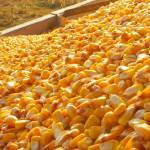Grain Bin Entrapment Numbers Increase

Reports of human entrapment in bins of stored grain increased more than 34% in 2010 compared to the previous year, setting an all-time U.S. record of 51 incidents. Figures provided by the Purdue Agriculture Confined Space Database showed that, while the number of incidents increased, rescue numbers are also better. Prior to 2005, only about 25% of trapped grain workers survived and were rescued, compared to more than 50% at present.
It is suspected that actual entrapment incidents are underreported, possibly because nonfatal incidents on private horse or livestock farms may not be documented and commercial operations don’t want to draw attention to accidents. Total incidents may be about 20% to 30% higher than what is reported. No comprehensive reporting system is in place, according to an article in World Grain.
The rise in entrapments has several causes. First, the nation is growing more corn (about 13 billion bushels currently as opposed to less than a third as much in the 1960s) and is storing the harvested grain for longer periods. Demand is up, as corn is used not only in feeds for horses and other livestock species but also in the manufacture of ethanol. Grain that is stored for a longer period of time is more likely to clump in bins, sometimes because of mold formation. Storage bins may also be much larger today than in the past, and clogged bins can contain enormous amounts of grain weighing several tons.
Humans sometimes enter a bin to break up clumped grain that impedes discharge, and are trapped as the grain begins to flow toward an outlet.
A second scenario is the collapse of a bin or silo, where the outflow of grain buries workers outside the storage unit. This is becoming more common because older bins may have weakened after years of use. An article in World Grain stated that the average lifespans of grain storage units are 50 to 70 years for concrete bins and 25 to 30 years for steel bins. If no one can remember when a certain storage unit was installed, it probably needs to be replaced!
Entrapment incidents can happen in grain silos and storage bins on private farms as well as at commercial feed manufacturing facilities. Horse owners who store grain or feed in bulk should be aware that entrapment and suffocation is not limited to industrial storage bins, but can take place in much smaller units, especially if children have access to the storage area.
Farm owners and industry officials can take steps to limit grain bin entrapments. First, children should never be allowed to enter grain bins, and the bins should be locked or secured to prevent such entry. For adult workers, training should be carried out on a regular basis. Fire departments or rescue squads should be contacted to help with training and to conduct practice rescues. Safety rules should be displayed and enforced.
The best case is for no one to enter a grain bin, but in reality, entry may be necessary at times. Because this is the case, safety policies should include a system to ensure that no one enters a bin without a designated watcher; no untrained person enters a bin; and ventilation is in place, with air tested frequently to be certain there is no danger from low oxygen levels. Lifelines and harnesses should be used, and training with this equipment should be given at frequent intervals. Finally, anyone with a grain or feed storage unit on the property—from private horse farms to large industrial operations–should know what types of rescue backup are available. In some communities, grain mills and fire or rescue departments have teamed to form grain entrapment rescue groups that can identify hazards, obtain rescue equipment, learn incident techniques, and train together in response procedures. Telephone numbers for rescue teams should be posted by every telephone at a farm or industrial grain facility.








